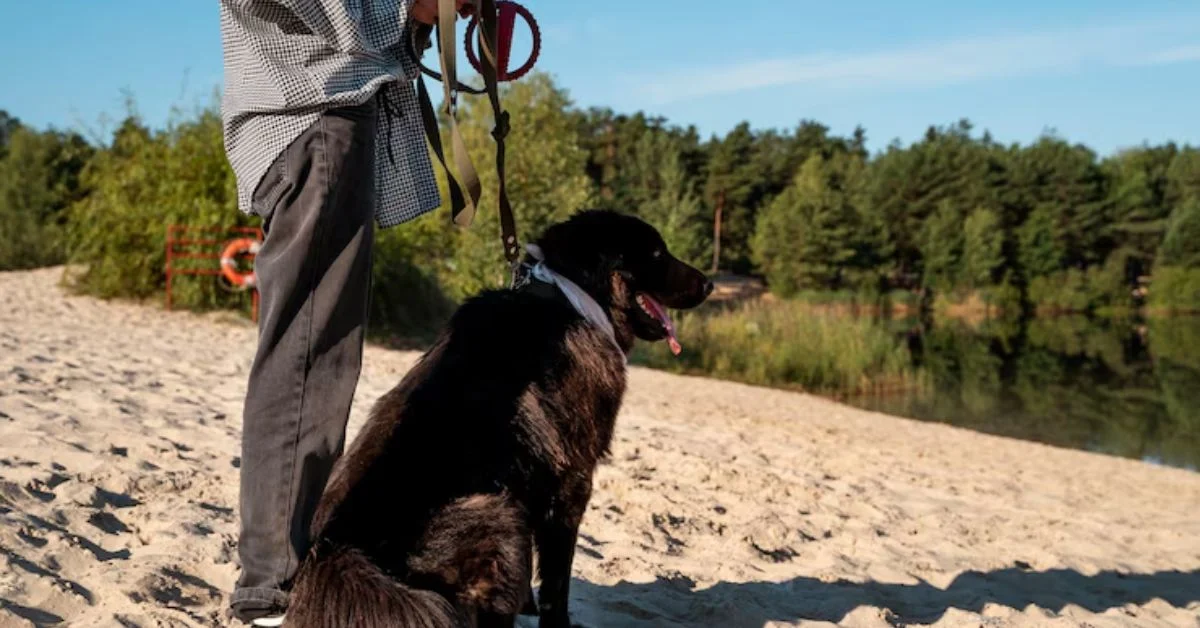In the expansive terrain of the American West, certain dog breeds have earned their place not for pedigree but for performance. One such breed is the Hanging Tree Dog—a rare but highly specialized working dog known for its stamina, intelligence, and livestock-handling ability. For ranchers, this is not just a pet; it’s an indispensable partner.
In this comprehensive guide, we explore the origins, temperament, physical characteristics, and modern-day role of the Hanging Tree Dog. Whether you’re a livestock handler, a dog enthusiast, or simply curious about this resilient breed, this article will provide you with accurate and updated information based on its real-world utility and evolving significance.
The Origins of the Hanging Tree Dog
The Hanging Tree Dog is a modern American working breed, developed in the late 20th century to meet the demands of ranchers handling tough cattle in harsh environments. It’s not a product of aesthetic breeding but one carefully engineered for resilience and utility.
The breed was created by Gary Ericsson, a well-known cattleman, who aimed to develop a dog that could do the work of several herding dogs in one—fast, gritty, and with a natural instinct for controlling livestock without being overly aggressive.
Breed Composition
The Hanging Tree Dog is a composite of several working breeds, including:
- Border Collie – for intelligence and herding instinct
- Catahoula Leopard Dog – for tracking ability and toughness
- Australian Kelpie – for stamina and agility
- Australian Shepherd – for loyalty and versatility
Each component added a crucial trait to the mix, resulting in a breed capable of handling anything from large cattle to rugged, brushy terrain.
What Makes the Hanging Tree Dog Unique?
1. Mental Toughness and Intelligence
Unlike many companion dogs, the Hanging Tree Dog thrives on problem-solving. It is bred to make decisions under pressure without relying on constant commands from its handler. This self-directed style is particularly valuable on large ranches where immediate supervision isn’t always possible.
2. Incredible Work Ethic
Few dogs can match the stamina and work drive of this breed. These dogs are known to work all day under extreme conditions—desert heat, rocky terrain, dense brush—and still be ready for more. They were bred to meet a purpose, not to pose in dog shows.
3. Bite and Hold Ability
One of the defining traits of the Hanging Tree Dog is its willingness to bite and hold large livestock. While many herding dogs only nudge or flank, these dogs can physically stop an aggressive or runaway cow by engaging directly. This makes them particularly valuable in tough ranch operations.
4. Athleticism and Agility
Despite their rugged work ethic, Hanging Tree Dogs are also fast, lean, and agile. They can jump into the bed of a truck, scale fences, and navigate steep slopes with ease. Their physical dexterity is key to their success in environments where a slower dog might fall behind.
Physical Characteristics
While the breed is more about function than looks, there are some common physical traits:
| Trait | Description |
|---|---|
| Size | Medium, typically 40–60 pounds |
| Coat | Short to medium-length, weather-resistant |
| Color | Often black with white or tan markings, but varies |
| Build | Muscular, lean, and compact |
| Eyes | Alert, often amber or brown |
| Ears | Erect or semi-erect |
While there’s no standardized breed registry for the Hanging Tree Dog, these physical features help distinguish it from similar breeds.
Temperament and Behavior
Loyal, Not Clingy
These dogs form strong bonds with their handlers but are not overly dependent. They prefer having a job to do and become restless without structure or activity. This isn’t the kind of dog that thrives in an apartment setting or as a casual pet.
Protective But Not Aggressive
While protective of livestock and territory, the Hanging Tree Dog typically isn’t aggressive toward people unless provoked. Their alertness makes them excellent watchdogs, but their first instinct is to herd or control, not attack.
Socialization Matters
Because of their strong drive and intensity, early socialization is critical. Without proper exposure to people, other dogs, and structured training, they can become overly dominant or reactive.
Training a Hanging Tree Dog
Start Early and Stay Consistent
The key to training this breed is early exposure and consistent expectations. These dogs are fast learners but can also be stubborn. They respond best to handlers who provide a mix of discipline and challenge.
Use Their Instincts
Instead of suppressing their natural drives, effective training channels them productively. For example, using structured herding exercises or agility training helps focus their energy.
Avoid Over-Correction
Heavy-handed training can backfire. These dogs are sensitive to tone and body language. Praise and reward systems work better than punishment.
Mental Stimulation Is Critical
They need puzzles, jobs, and interaction. Without it, boredom sets in quickly, and a bored Hanging Tree Dog is likely to chew, dig, or escape.
Ideal Living Conditions
Space to Run
This breed is best suited to open spaces: farms, ranches, or rural homes with large yards. Suburban life is possible but only with intense daily exercise and mental stimulation.
Other Animals
They often do well with other working animals but may struggle with smaller, prey-like pets unless raised together from a young age.
Weather Tolerance
With a coat designed for the outdoors, Hanging Tree Dogs tolerate both heat and cold fairly well. They prefer being outside to lounging indoors.
The Hanging Tree Dog in Modern Ranching
The breed has found a solid niche in modern cattle ranching. As ranchers scale operations or work in more difficult terrains, the Hanging Tree Dog’s ability to cover ground and handle high-stress situations gives it a clear advantage.
They’re also used in:
- Competitive stock trials
- Search and rescue (in rough environments)
- Remote security for livestock
- High-intensity agility competitions
Is the Hanging Tree Dog Right for You?
This dog is not for everyone. But if you:
- Own or manage livestock
- Have ample space and time for daily exercise
- Enjoy training and working closely with a high-drive dog
- Need a self-sufficient, intelligent canine partner
…then the Hanging Tree Dog could be a valuable addition to your life.
For the average pet owner, however, this breed is likely too intense. They are not bred for couch life or casual walks—they thrive with a mission.
Common Misconceptions
1. “It’s a Treeing Dog”
Despite the name, the Hanging Tree Dog is not a treeing breed like a coonhound. Its name comes from the Hanging Tree Ranch where it was first developed—not from any behavior involving trees.
2. “It’s a Registered Breed”
While it’s gaining recognition among working dog communities, the Hanging Tree Dog is not yet officially registered with major breed clubs like the AKC. Instead, it’s valued for its skills, not its pedigree.
3. “It’s Too Aggressive”
The breed is assertive, not aggressive. Proper training ensures they use their strength and instincts appropriately. Aggression usually stems from poor handling or lack of stimulation.
The Future of the Hanging Tree Dog
As agricultural practices evolve and the need for efficient, self-driven working animals grows, the Hanging Tree Dog’s unique qualities are becoming more valuable. With selective breeding focusing on ability rather than looks, this dog is likely to remain a key player in cattle operations across the U.S. for years to come.
There’s also increasing interest from high-performance canine enthusiasts who value the breed for competitive herding and agility. If the breed gains more standardized breeding and structured training programs, it may eventually earn formal recognition as a standalone working breed.
Conclusion
The Hanging Tree Dog is a modern American success story—a dog bred not for conformity or exhibition, but for utility, grit, and intelligence. It stands as a testament to what selective purpose-driven breeding can accomplish.
For the right handler, it’s an unmatched asset. For the wrong one, it’s a high-voltage challenge. Understanding its origins, temperament, and needs is the first step in determining whether the Hanging Tree Dog is the partner you’ve been searching for.
Frequently Asked Questions (FAQs)
1. What is a Hanging Tree Dog used for?
It’s primarily used in cattle ranching to herd, control, and protect livestock. It’s known for bite-and-hold herding.
2. Is the Hanging Tree Dog a recognized breed?
No, it is not formally recognized by major kennel clubs like AKC but is widely respected in working dog circles.
3. Are Hanging Tree Dogs good family pets?
Generally, no. They’re best suited to working environments and require high levels of stimulation and space.
4. How do you train a Hanging Tree Dog?
With consistency, early socialization, and tasks that channel their natural instincts—such as herding or agility drills.
5. What is the origin of the name “Hanging Tree Dog”?
It comes from the Hanging Tree Ranch in Texas where the breed was developed—not from any tree-related activity.
For more information, click here.









